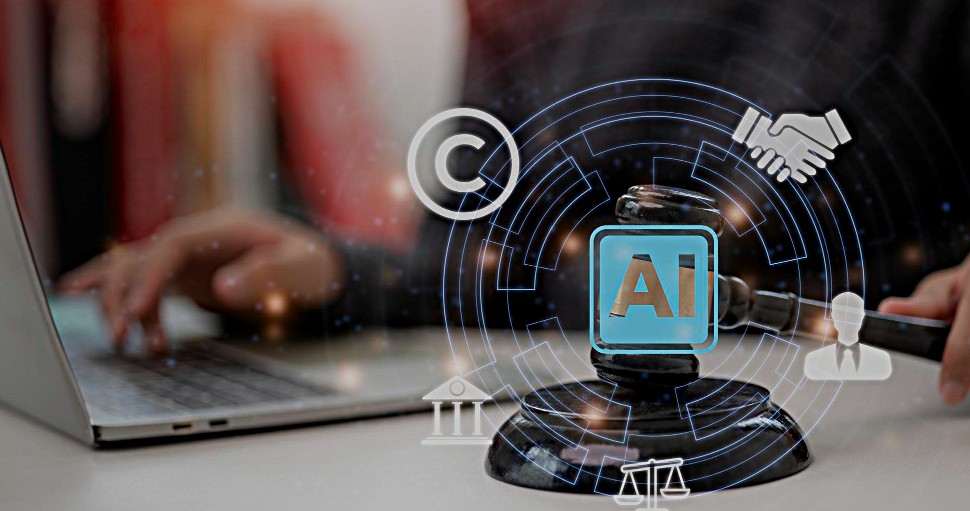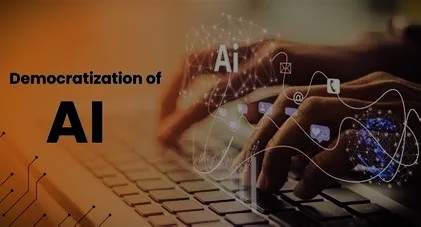Enterprise AI Adoption Accelerates

The AI landscape continues to evolve at breakneck speed, with new developments reshaping how we work and live. The integration of AI into everyday business operations has reached a tipping point where accessibility meets functionality.
Small businesses are discovering that AI tools can level the playing field with larger competitors. These developments focus on practical applications rather than theoretical possibilities, addressing real pain points in business workflows. This represents a significant shift in how professionals approach their daily workflows, with early adopters reporting productivity improvements of 30-50% in routine tasks.
Recent updates have focused on making AI more intuitive and user-friendly for non-technical users. Companies implementing these tools report immediate improvements in efficiency, accuracy, and employee satisfaction. The user experience has been refined to the point where even non-technical users can implement these solutions within hours rather than weeks.
These tools represent a fundamental shift in how we approach productivity and business operations. The trajectory suggests that AI adoption will accelerate as tools become more specialized and user-friendly. For businesses looking to stay competitive, the time to explore these innovations is now, not later.
AI Regulation Updates and Business Impact

Artificial Intelligence is no longer a futuristic buzzword—it’s embedded in how we hire, market, analyze, and innovate. But as AI tools become more powerful and pervasive, governments worldwide are racing to catch up with regulation. For businesses, this means opportunity and responsibility are evolving in real time.
🌍 Global Regulatory Shifts: From Innovation to Accountability
- European Union: The EU’s AI Act is now finalized and set to roll out in phases. It introduces a risk-based framework:
- Unacceptable risk systems (e.g., social scoring, biometric surveillance) are banned.
- High-risk systems (used in hiring, credit scoring, law enforcement) face strict compliance requirements.
- Minimal risk tools (like marketing automation) must meet transparency standards.
- United States: No federal AI law yet, but states are stepping up:
- NYC’s Local Law 144 requires bias audits for AI hiring tools.
- California’s CPRA impacts data usage and algorithmic profiling.
- Colorado and Illinois are drafting bills focused on employment and financial AI accountability.
- China: Rapid innovation continues under tight state control, especially in surveillance and data-sensitive sectors.
Whether you’re a solopreneur or scaling a global team, AI regulation affects how you build, deploy, and communicate with AI tools. Key implications:
- Compliance is no longer optional: Businesses must classify AI systems by risk and maintain audit trails.
- Transparency is key: Customers and employees need to know when they’re interacting with AI.
- Human oversight matters: Especially for high-risk applications like recruitment or credit scoring.
- Marketing and HR teams: Must ensure AI tools meet disclosure and fairness standards.
🛠️ Action Steps for Businesses
- Audit your AI stack: Identify which tools fall under high-risk or minimal-risk categories.
- Update your policies: Include AI usage disclosures in privacy policies and user agreements.
- Train your team: Build AI literacy across departments to ensure ethical and compliant use.
- Stay informed: Monitor updates from regulators and industry bodies—this space moves fast.
💡 Final Thought: Regulation Isn’t a Roadblock—It’s a Roadmap
AI regulation isn’t about slowing down innovation. It’s about building trust, fairness, and long-term sustainability. Businesses that embrace these changes early will not only stay compliant—they’ll lead the way
The Democratization of Artificial Intelligence
The Democratization of Artificial Intelligence: Power to the People
Artificial Intelligence is no longer confined to elite research labs or billion-dollar tech firms. It’s rapidly becoming a tool for everyday creators, educators, entrepreneurs, and even parents. This shift—known as the democratization of AI—is transforming how we access, use, and shape technology. At its core, democratizing AI means making it accessible, affordable, and empowering. Thanks to intuitive platforms and freemium models, individuals without coding backgrounds can now build automations, generate content, and solve complex problems with ease. The rise of user-friendly tools like ChatGPT, Canva’s Magic Write, and no-code platforms such as n8n and Zapier has opened the door for small teams and solo creators to compete at enterprise levels.
This transformation is especially impactful for small businesses and community organizations. With AI, they can streamline operations, personalize outreach, and create high-quality content without needing large budgets or technical teams. Educators can tailor learning experiences, nonprofits can automate donor engagement, and parents can design emotionally resonant routines—all with minimal tech overhead. The power of AI is shifting from centralized institutions to the hands of everyday users, turning consumers into creators and innovators.
Several key drivers are fueling this movement. Low-code and no-code platforms are removing technical barriers, while open-source models like Hugging Face and Meta’s LLaMA are fostering community-driven innovation. Generative AI tools are simplifying design, writing, and analysis, making it possible for non-experts to produce professional-grade work. At the same time, regulatory efforts are helping ensure that this expansion is ethical and transparent, encouraging responsible use across industries.
However, democratization isn’t without its challenges. Bias and fairness remain critical concerns, especially as more people deploy AI without deep technical oversight. Digital literacy gaps can limit access, and data privacy becomes increasingly important as AI tools touch more aspects of daily life. To truly democratize AI, we must pair access with education, governance, and community support.
Ultimately, the real magic of AI democratization lies not just in using tools—but in shaping them. When everyday users become co-creators, the future of AI becomes more inclusive, ethical, and human-centered. Whether you’re automating workflows, crafting parenting content, or scaling a global team, the question is no longer “Can I use AI?” but “How will I shape it?” The democratization of AI is not just a tech trend—it’s a cultural shift. And it’s already happening.
AI Market Predictions: What’s Coming Next
As we move deeper into 2025, the artificial intelligence market is evolving from hype to hard impact. The global AI sector is projected to reach over $244 billion this year, with a compound annual growth rate of 26.6% expected through 2031. But beyond the numbers, what’s truly shaping the future is how AI is being integrated—not just into enterprise systems, but into everyday workflows, consumer experiences, and even parenting routines.
One of the most significant shifts is the rise of specialized AI agents. These aren’t just general-purpose chatbots—they’re niche powerhouses designed to handle specific tasks like investment forecasting, customer sentiment analysis, or personalized education. Platforms like Edgen are already deploying multi-agent systems that deliver stock predictions, ratings, and real-time market insights with near-instant precision. This signals a broader trend: AI is becoming more personalized, more actionable, and more embedded in decision-making.
Meanwhile, the infrastructure behind AI is scaling rapidly. Nvidia’s CEO recently forecasted a $3–4 trillion spend on AI infrastructure by the end of the decade, driven by hyperscalers like Microsoft and Amazon. Despite concerns about market saturation, the demand for AI chips and data center capacity shows no sign of slowing. This boom is also fueling innovation in predictive intelligence. AI models are now matching—and sometimes outperforming—human prediction markets in forecasting real-world events, from elections to economic shifts. This capability is redefining how institutions plan, invest, and respond to uncertainty. For businesses, this means AI is no longer a tool—it’s a strategic partner. Companies that embed responsible AI governance, upskill their teams, and align their data foundations are seeing productivity gains of up to 50% in key areas.
Looking ahead, expect AI to cut product development lifecycles in half, reshape competitive landscapes, and drive sustainability strategies across industries. From smarter automation in small businesses to emotionally intelligent content creation for families, the next wave of AI is about relevance, responsibility, and real-world results. The question isn’t whether AI will disrupt your sector—it’s whether you’re ready to lead that disruption. The future of AI isn’t optional. It’s operational.
⚡ Ready to Future-Proof Your Business?
Don’t wait for disruption—lead it. Whether you’re a solopreneur or scaling a team, the smartest move is starting now.
👉 Book a strategy session to map your AI adoption plan with expert guidance.
🔗 Get Started with Dimona.biz


No responses yet